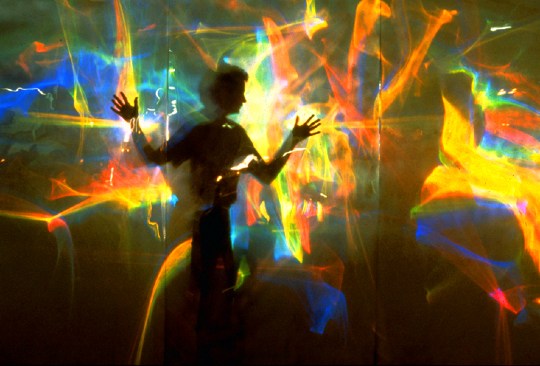 | |||
An exhibit of the scale and beauty of the Sun Painting - the work of San Francisco artist Bob Miller - is ”crucially important" for a science museum, says Frank Oppenheimer. The scattering of sunlight through a series of prisms paints colors onto a giant screen - ”a brilliant abstract painting that shimmers and changes as people move in the light path and brush against the Mylar mirrors behind the screen," writes Dr. Oppenheimer. | |||
| The Benefits of Overkill The attributes of exhibits that I have described - their beauty, their multiple linkages with different themes, the inclusion of extraneous possibilities for intervention and discovery have proved to be important to the overall effectiveness of the museum. There are other general practices that are important. In particular, when we make an effort to illustrate some process or behavior that is pervasive in nature (refraction, resonance, or sensory lateral inhibition, for example), this behavior is presented in many exhibit pieces. Each illustrates the same underlying process in very different contexts. For example, wave motion is a powerful abstraction that could not be perceived from any single type of wave. But the concept can take shape by observing the effect of light waves and water waves and | sound waves, of waves on an oscilloscope, and waves in a string or a flat plate. Some of our exhibits on waves are grouped together as a sub-section in the museum. Many of them are scattered in various other topical sections of the museum. Even phenomena less pervasive than waves need multiple and varied examples so visitors can develop an intuitive understanding. We have three exhibits on stroboscopic illumination, and plan several more. There are at least half a dozen on spatial and temporal beats, but we still need simpler and clearer exhibits on this topic. We have two dozen exhibits about the perception and mixing of color, and well over a dozen different ways to involve people in the basic phenomena of depth perception through binocular vision. One of the great virtues of museums stems from the | ||